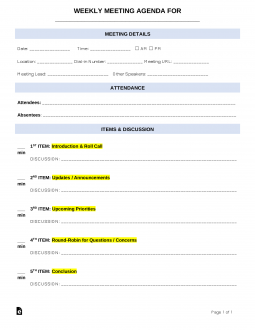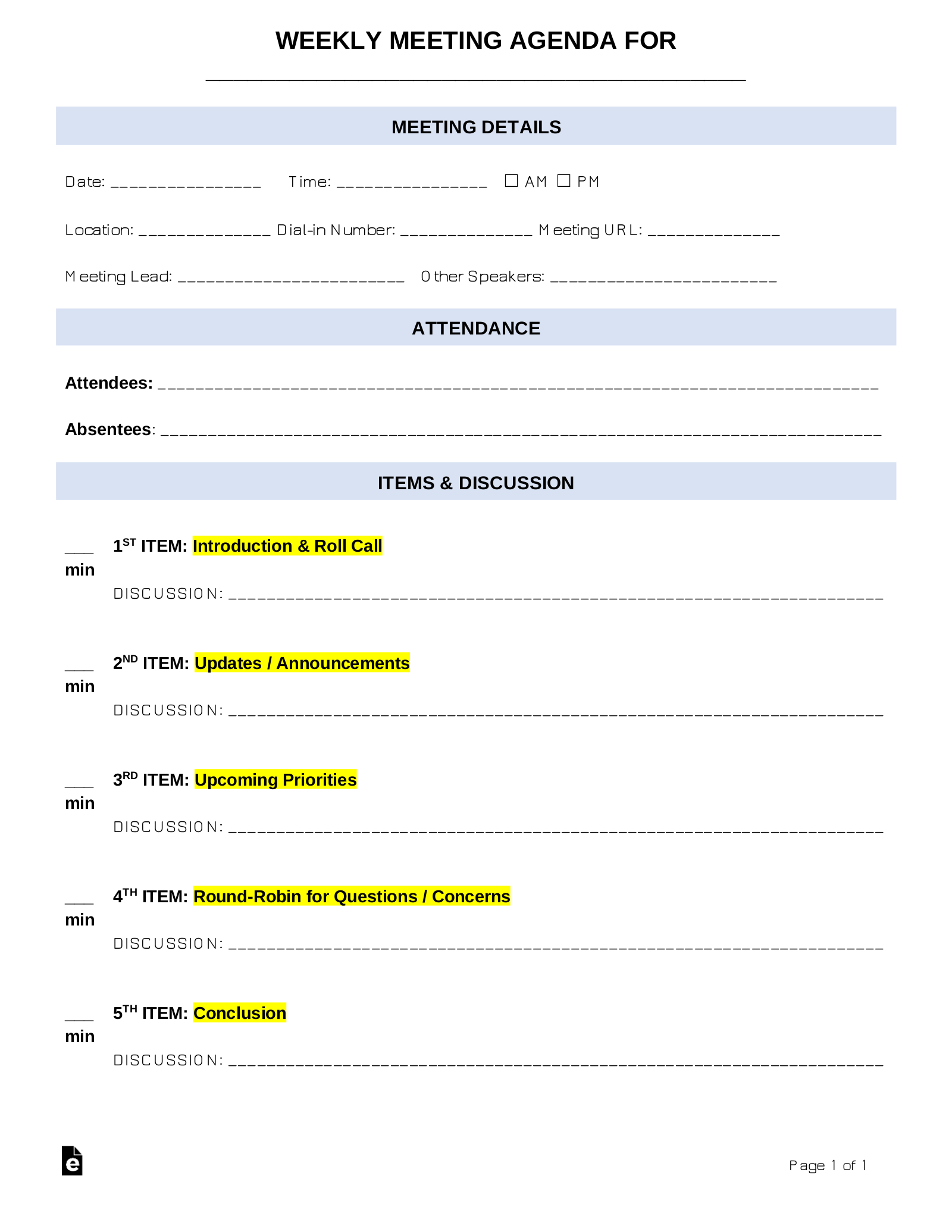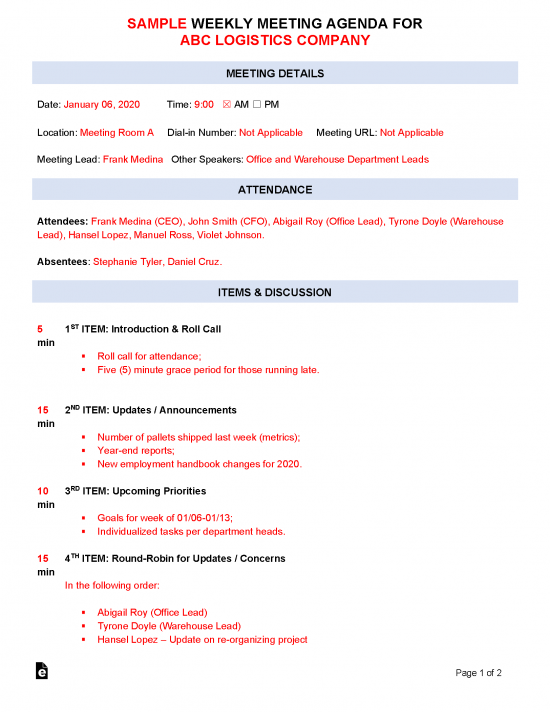Updated August 08, 2023
A weekly meeting agenda is a document that serves as a guide for a meeting that recurs on a weekly basis. On the agenda, the meeting facilitator may detail the items and discussions at hand for the entire duration of said meeting. Agendas begin with addressing any updates or announcements that have occurred since the last meeting and end with a round-robin-style discussion in which attendees state updates and concerns. The formatting of the agenda may vary depending on the nature of the meeting. Businesses, for instance, often utilize weekly meetings to provide updates of interest to the regular attendees (seen below). Regardless of the meeting’s nature, setting an agenda and using weekly meeting minutes in tandem keeps attendees on track and provides a guide for all to follow.
Table of Contents |
Formatting (7 parts)
The formatting of a weekly meeting agenda depends on the type of meeting being conducted. Below is a format tailored for businesses/organizations that wish to convene once a week to address company-specific updates and any other pertinent information.
I. Meeting Details
The leader/facilitator of the meeting shall include important meeting details, such as date and time, location, and the names of any speakers. A dial-in number or URL can also be provided if the meeting will occur online through video-conferencing applications.
II. Take Attendance
All attendees can be listed after taking roll call. Any absentees can be recorded as well.
III. Introduction of Agenda
The agenda should be distributed to all members. After all the parties review the document, the meeting leader can seek approval from attendees to proceed with the agenda as-is. Note, approval of agenda may solely apply to certain organizations or boards.
The meeting facilitator can simply introduce the agenda by overviewing the items if approval is not sought.
IV. Updates / Announcements
The leader of the meeting can issue any updates or announcements that have come to light since the last meeting. Weekly meetings are usually held to address ever-changing circumstances and issues/troubles that arise throughout the span of seven days. Therefore, the main concerns or reports should be communicated first in order to later open the topic for discussion.
Many businesses/organizations also use this slot to report any metrics and trends of possible interest to the attendees.
V. Priorities
Perhaps the most vital aspect of the weekly agenda, this item will be dedicated to the discussion of upcoming priorities for each attendee. A list of tasks can be given priority for the week depending on that week’s demand.
A manager (of a company/organization) can use this item to assign tasks to their employees based on the week’s most pressing matters.
VI. Round-Robin for Questions / Concerns
It is essential to open the floor for questions and related comments given the updates and announcements weekly meeting yield. An effective way to do this entails each attendee chiming in with their input on the matters in question. What’s more, each attendee may provide any updates regarding projects/assignments that they have been working on since the last meeting.
Having this item on the agenda will also encourage attendees to reserve their questions until the allocated time for open discussion.
VII. Conclusion
Typically, the leader of the meeting will end on a positive note or finalize the meeting by reviewing the bigger picture; after all, weekly meetings are usually scheduled in order to maintain a group of individuals on task toward larger projects and goals. This item can also be used to alleviate the more serious tones of the meeting as well as discuss other items otherwise not on the regular agenda.
Sample – Weekly Meeting Agenda
Download: PDF, MS Word, OpenDocument



